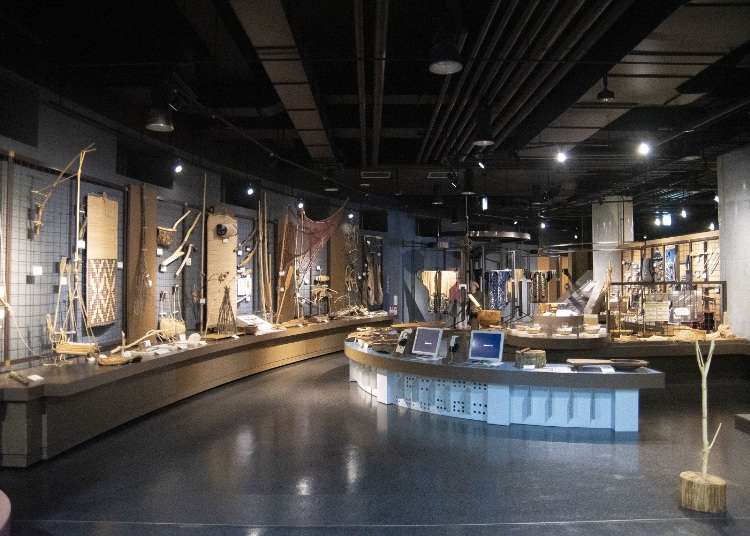
The Ainu people are an indigenous people with a rich cultural heritage living in the central part of Hokkaido, Japan’s northernmost island. Although there are various places around Hokkaido where you can be introduced to the life, history, and culture of the Ainu people, there is a conveniently located facility in Sapporo that you can easily visit.
Here we will introduce the Sapporo Ainu Culture Promotion Center Pirka Kotan, where you can learn more while experiencing that culture firsthand.
The Ainu, an indigenous people of Hokkaido, have long lived in harmony with nature
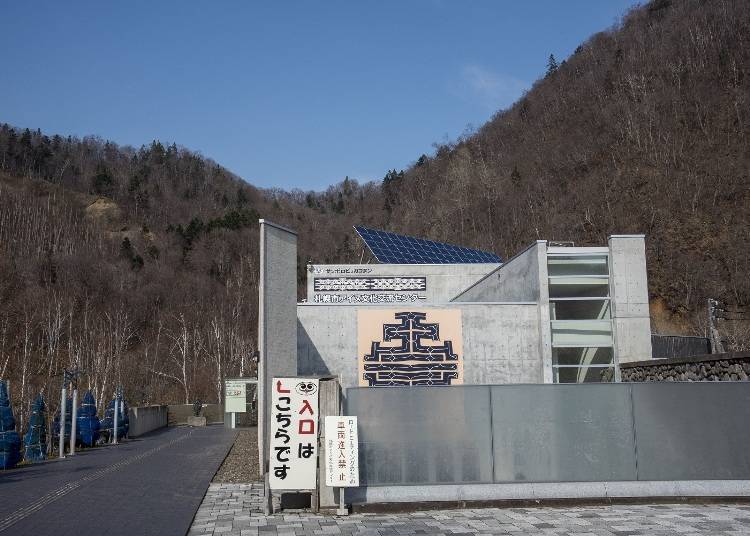
The facility is in Koganeyu, Minami Ward, located about a 40-minute drive outside of Sapporo City. The upper waters of the Toyohira River, which flows through the center of Sapporo, are rich in natural beauty. There are hot springs in Koganeyu, and if you drive another 10 minutes farther, you will come to the Jozankei area, which is also called Sapporo’s Annex.
Exhibitions of Ainu culture you can enjoy firsthand
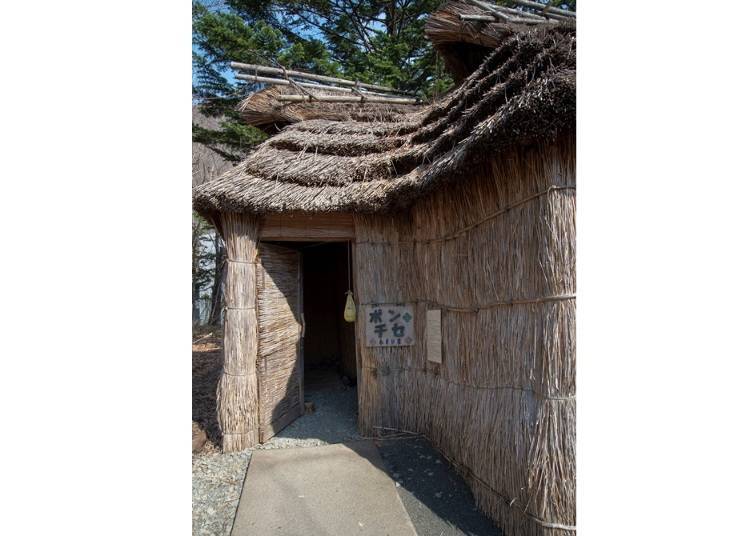

There are two exhibition areas inside the facility: the History Village, where the chise (houses) in which the Ainu lived and the pu (food) have been recreated, and the Natural Village, which recreates the iyutapu (tools for milling rice) and ponds. In addition, there is a modern building with shafts of green concrete which contains the main exhibitions.
A wide array of more than 300 items of traditional clothing and folk craft
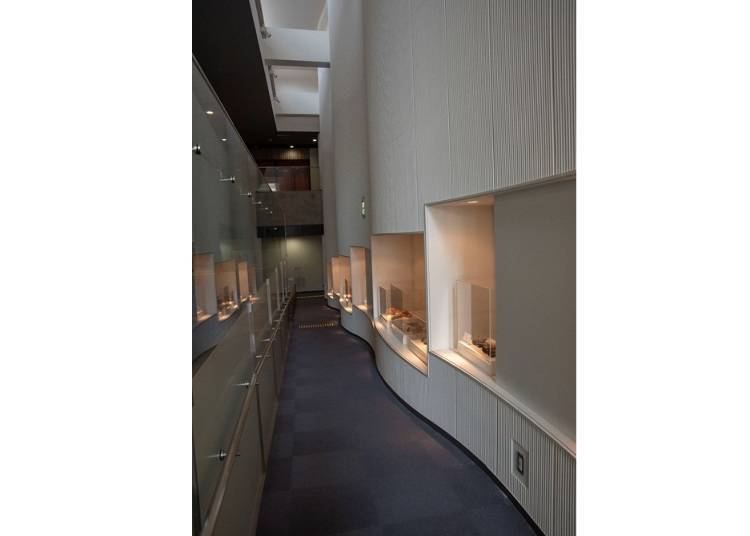
The first thing you notice when entering the building is a large tree-like monument. You then go along a gallery corridor that gently slopes down to the exhibition room downstairs. The undulating walls are symbolic of a flowing river which was a place of importance to the Ainu. Show windows on the wall display new and old Ainu cultural artifacts.
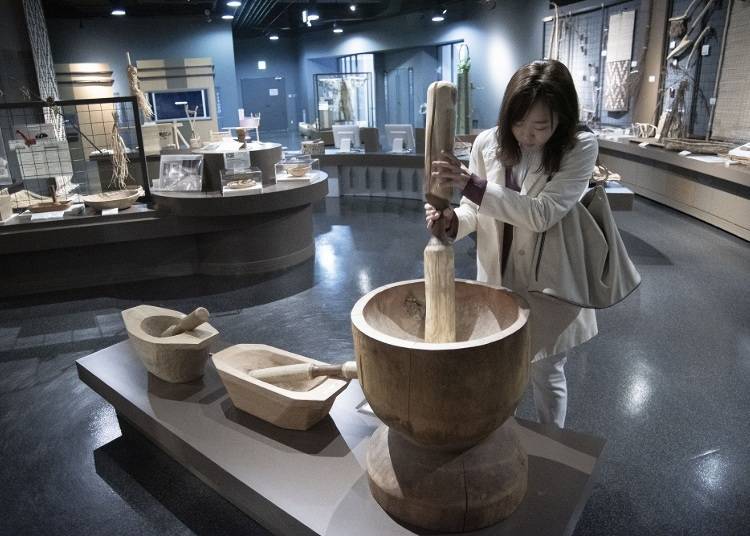
Finally, you come to the main exhibition room. There is an admission fee (200 yen for the general public). The more than 300 items displayed are tastefully arranged and lighted. The names of the exhibits are written in English, with traditional clothes and folk tools restored and produced mainly by the members of the Sapporo Ainu Association. Unlike in museums, here you are allowed to touch many of the displays.
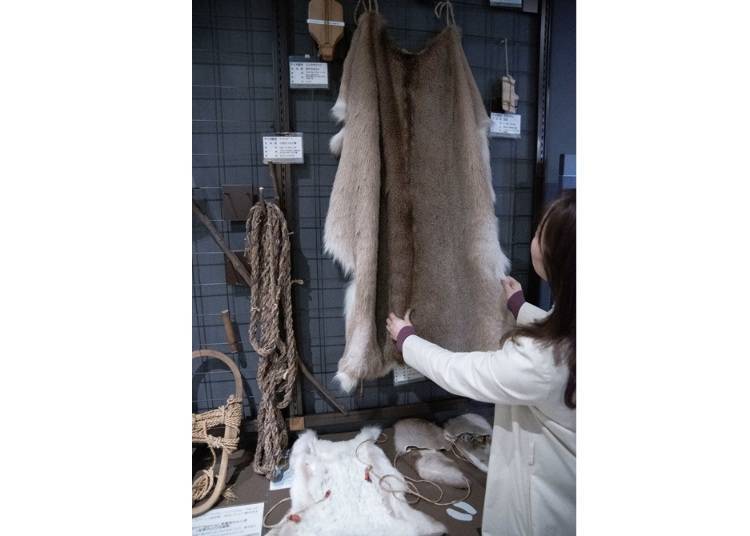
For example, a mantle made from deer hide the Ainu wore to fend off the cold of winter.
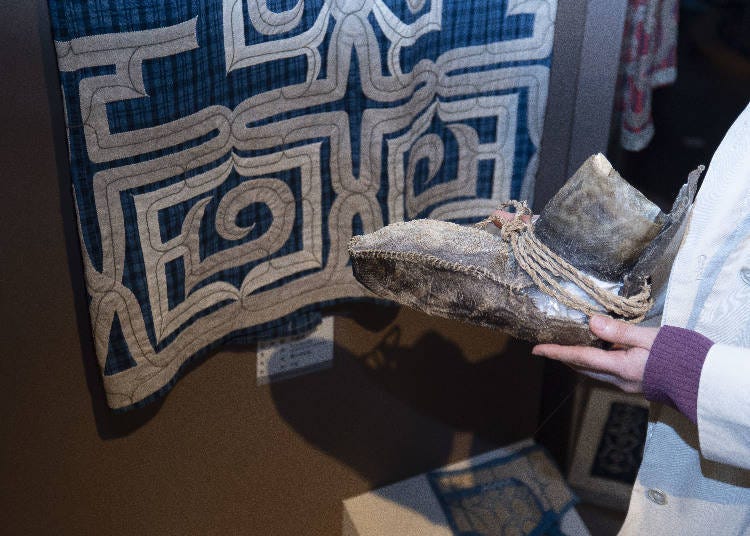
Here, too, are shoes made from salmon skin. The fins of salmon were used to prevent slipping in the heavy snow Hokkaido gets in winter. Feeling the texture and weight of each of these items, you can better imagine what life may have been like for the Ainu.
Learn more about Ainu culture through videos and games
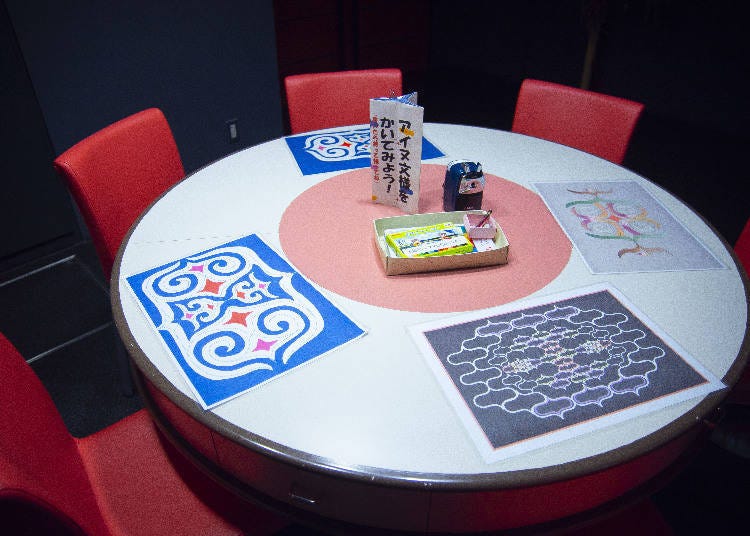
One of the things that has attracted much attention in Ainu culture is the unique Ainu patterns that can be seen in traditional clothes and the like. Designs employing curved lines and swirls each have special meanings.
There is a corner in the exhibition room where you can fill in pictures of these Ainu patterns. You can also freely play with the grape-vine ring toss.
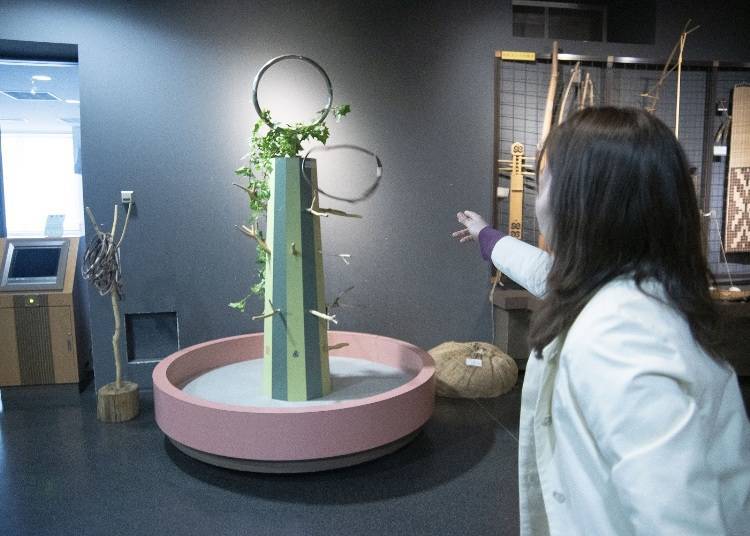
Also in the building is an exchange hall equipped with a stage, a library with books about the Ainu, an information corner where you can watch videos, and a kitchen as well as other areas where various events are held.
One is also reminded about the beginning of Hokkaido
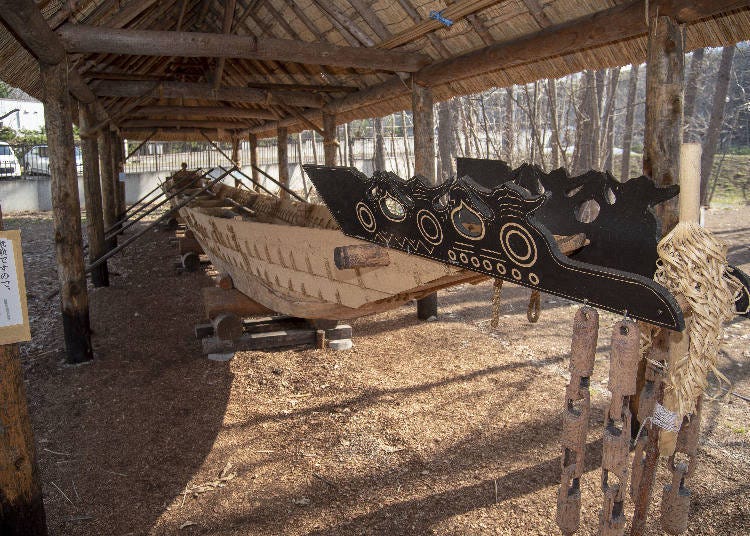
Outside there is a 15-meter long sea-going boat. From the end of the Edo period and into the Meiji period, this land to the north called Ezo was explored and later named Hokkaido by Takeshiro Matsuura, who traveled the Teshio River basin using an Ainu-made wooden boat. (Reference: Nayoro City "Public Information No. 150.”)
The land is resplendent with lush, green mountains, and the sound of rivers flowing nearby was a part of the lives of the Ainu, who held nature in great esteem, and you can experience all this, too, at the Sapporo AINU Culture Promotion Center "Sapporo Pirka Kotan." One can get a feel of how important such things were to the Ainu while also enjoying the scenery of the four seasons.
Text by: minna no kotoba sha
-
Sapporo Pirka Kotan札幌市アイヌ文化交流センター・サッポロピリカコタン
- Address 〒061-2274 札幌市南区小金湯27 / Koganeyu 27, Minami-ku, Sapporo 〒061-2274
-
Nearest Station
Access: About 60 minutes by bus from Sapporo Station going to Jozankei Onsen; about 38 minutes by bus from the Namboku Subway Makomanai Station going to Jozankei Hot Springs; in both cases get off at the Koganeyu bus stop from which it is about a 6-minute walk.
- Phone Number 011-596-5961
Hours: 8:45 a.m. ~ 10:00 p.m. (exhibition rooms and outdoor facilities (9:00 a.m. ~ 5:00 p.m.)
Fee: Admission free, 200 yen admission fee to the exhibition room for adults, 100 yen for high school students, and no charge for junior high school students and younger
Closed: Mondays, national holidays, and last Tuesday of the month; 12/29 ~ 1/3
- Area
- Category
*Prices and options mentioned are subject to change.
*Unless stated otherwise, all prices include tax.
Recommended places for you
-
Appealing

Rukku and Uohei
Izakaya
Sapporo / Chitose
-
Appealing

Odori Park
Parks
Sapporo / Chitose
-
Appealing

Kanemori Red Brick Warehouse
Shopping Malls
Hakodate
-

Sapporo Clock Tower
Landmarks
Sapporo / Chitose
-
Appealing

Mt. Hakodate Observatory
Forests & Mountains
Hakodate
-
Appealing

Asahiyama Zoo
Zoos, Aquariums & Botanical Gardens
Asahikawa
-

Expert-Recommended: 9 Hakodate Hotels Serving Up the Best Breakfasts in Town
by: Nobuka Kawashima
-

Beyond Hakodate and Matsumae: Enjoy the Hidden Gems of Hokkaido’s Donan Area
-
Ad

Smart Ways to Avoid Crowds and Enjoy a Safe, Comfortable Trip to Otaru.
-
Ad

Sapporo SATUDORA Shopping Guide: Get Souvenirs, Medicine & More at This Iconic Drugstore (Special Deal Inside!)
-

Great Local Eats: 5 Expert-Recommended Local Chain Restaurants in Hakodate
by: Nobuka Kawashima
-

Step into History at the Ofune World Heritage Site: Explore Hokkaido's Jomon Culture
-

Hakodate 2-Day Itinerary for Exploring Japan's Foodie North!
-

What to Pack for Japan: 8 Essential Things for a Hassle-Free Trip
-

Where to Stay in Noboribetsu: 6 Ryokan Hotels in Hokkaido's Spa Wonderland
-

Visiting Shiroi Koibito Park - Japan's Crazy Chocolate Theme Park
-

6 Surprisingly Cheap Things in Japan
-

Noboribetsu Onsen: 5 Best Things to Do in Japan's Famous Hot Springs Town!
- #best sushi hokkaido
- #things to do hokkaido
- #best ramen sapporo
- #what to bring to japan
- #new years in tokyo
- #what to buy in ameyoko
- #japanese nail trends
- #what to do in odaiba
- #onsen tattoo friendly tokyo
- #daiso
- #best sweets otaru
- #japanese fashion culture
- #best nature furano
- #japanese convenience store snacks
- #best japanese soft drinks
















